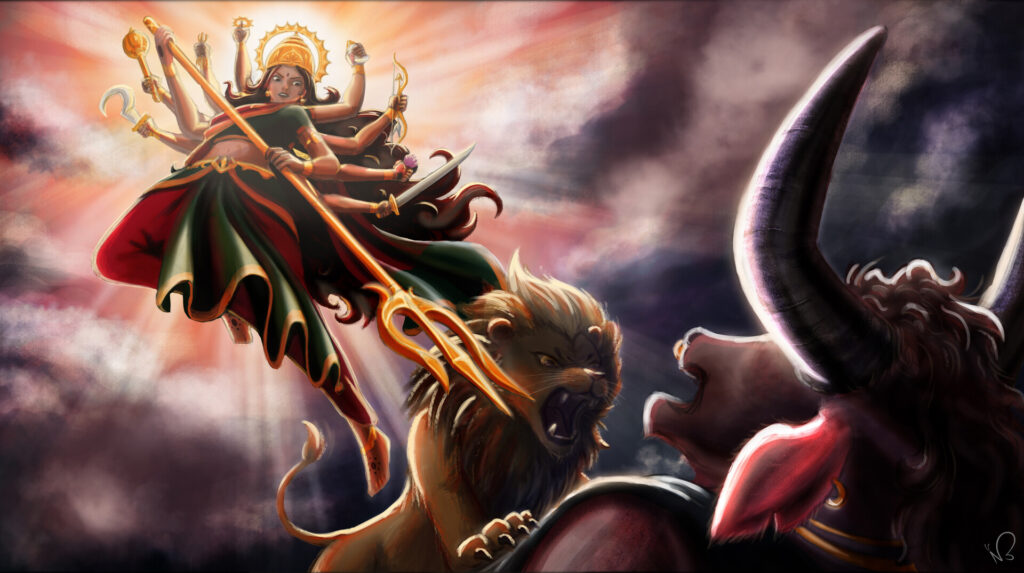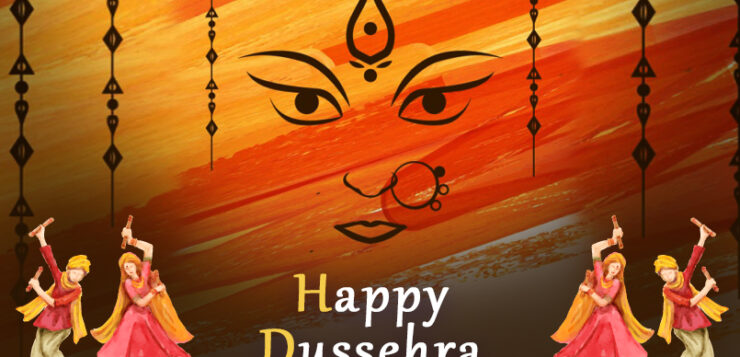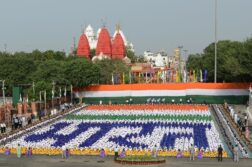Dussehra that is also known as Vijayadashami in Hinduism has great importance in the history of Hinduism. This day marks the victory of Lord Rama, an incarnation of Vishnu, over the 10-headed demon Ravana, who kidnapped Shri Rama’s wife, Sita. The Dussehra symbolizes the two Sanskrit words Dasha (“ten”) and hara (“defeat”). This depicts the success of good over wicked, Dussehra is celebrated on the 10th day of the Ashvina month (September–October), i.e. the seventh month according to the Hindu calendar, on the full moon night, called the “bright fortnight” (Shukla paksha). Dussehra corresponds to the zenith of the nine-day Navratri festival with the tenth day as the Durga Puja festival. It even signifies the beginning of preparation for Diwali, which falls 20 days after Dussehra.
Stories behind Dussehra origination
Story of Shri Ram’s victory over Ravana
India is a land of vibrant cultures, customs, and traditions, the festival of Dussehra is a proof of one of such culture celebrated in many ways. The eastern and southern part of the country celebrates Dussehra as the winning of Goddess Durga on the demon Mahishasura. It begins with the first day of Navratri and is celebrated continuously for nine days. While on the other hand, most northern and western states celebrate Dussehra as a victory of Lord Rama over the ten-headed demon king Ravana. Centuries ago, there was a king of Ayodhya named “Dashratha” who has three wives and four sons. He wanted his eldest son “Rama” to be the king after him. While on one side everyone in the kingdom was happy about this, Kekayi (one of the three wives) wanted her son “Bharath” to be the king. Therefore before the crown ceremony of Shri Ram, Kekayi asked Dashratha to fulfill her 2 pending promises as grated by the king years ago. She asked for making Bharath the king of Ayodhya and demanded to send Ram to exile for fourteen years.
Shri Ram agreed to fulfill those vows and decided to move to exile. His wife Sita and brother Laxmana also requested to come along and then three of them moved to the forests for the exile. While they were in exile, Ravana abducted Sita due to the mistreatment of his sister by the Laxman. And then to bring his wife back from his grip, there occurred a fight among Shri Ram and Ravana, in the end, if which Ram wins and Ravana dies. This is why we call it Vijayadashmi.

Story of Mahabharata
In the Mahabharata, when the Pandavas were in their thirteenth year of exile in disguise in the kingdom of Virata, before going to Virata, they hung their divine weaponry on the Shami tree. When Bhima kills Kichaka and knowing this Duryodhana surmises that the Pandavas were hiding in Matsya. Kaurava warriors then attacked Virata desiring to unveil the Pandavas. Then Virata’s son Uttara tried to take control of the army while the rest of the Matsya army has been attracted to fight Susharma and the Trigartas. Uttar then takes Brihannala with him, as his carter. On seeing the Kaurava army, Uttara loses control and tried to escape. Then Arjuna discloses his identity and his brothers’. Arjuna takes Uttar to the Shami tree and picked up his Gandiva after worshipping the tree, as it safeguarded the Pandavas’ weapons for a year. Arjuna reties the Gandiva’s thread and releases it, which produces a twang. While Kaurava warriors were waiting to spot Pandavas. Karna told Duryodhana that he would win over Arjuna and didn’t feel threatened by Drona’s words since the latter was deliberately praising Arjuna, because Arjuna was Drona’s favorite student. Ashwathama supports his father Drona and then Arjuna arrives to the battlefield.
The battle begun among the Arjuna and the Kuru army where all the warriors along with Bhishma, Drona, Karna, Kripa and Ashwathama attacked Arjuna to kill him, but Arjuna managed to defeat all multiple times. In the battle, Arjuna killed Sangramjita, the foster brother of Karna. Karna tried to fly away from Arjuna but he could not as Arjuna prayed to Sammohanaastra which left the army to fall asleep. Arjuna proved that he was the best warrior and defeated the entire Kuru army of 1,000,000s of soldiers; including Duryodhana, Dushasana, Shakuni, and Bhishma, Drona, Karna, Kripacharya, and Ashwatthama. One of some names given to Arjuna is Vijaya and this took place on the day when Lord Rama killed Ravana. As it was Arjuna’s victory day, it became popular as “Vijaya Dashami”.

Victory of Goddess Durga on Mahishasura
As mentioned, in the eastern and southern states, the festival is celebrated for the victory of goddess Durga over the evil ghoul Mahishasura. As mentioned in the Puranas, Mahishasura performed harsh mortification to get the boon to be immortal. But, when Lord Brahma told that his wish wasn’t practically possible, the arrogant Mahishasura altered his boon, wishing that if it was possible to kill him, it had to be done only by a woman. The deeply bigoted Mahishasura was extremely overconfident thinking that no woman was strong enough to stand against him and slay him. Soon, with his pristine power, he started chastening devastation in the three lokas, terrifying even the gods. That was the time when Goddess Durga came to rescue. She challenged Mahishasura and fought with him for a nine-day long battle, eventually killing the powerful asura on the tenth day. This is why the Navratri festival is nine days long each day dedicated to one of the nine incarnations of Devi Durga, ending with Durga Puja celebrations on the tenth day.





